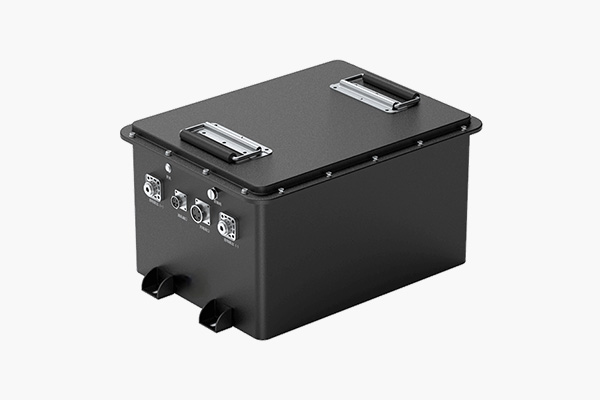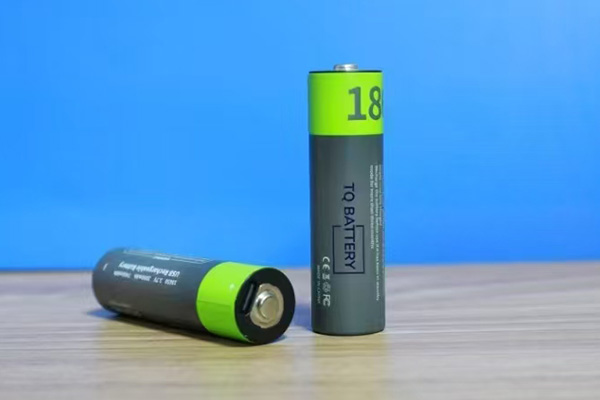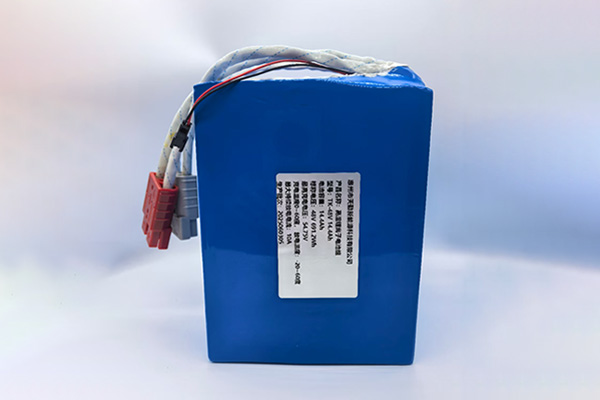Lithium ion battery overcharge test
The side reactions that occur during overcharging of lithium batteries are mainly different reactions of the electrolyte on the positive and negative electrodes. For positive electrodes, batteries with LiCoO2, LiMn2O4, or ternary materials as the main positive electrode materials are prone to decomposition reactions due to excessive delithiation of the positive electrode active material during overcharging, resulting in the generation of oxygen; More generally, due to high positive electrode potential and strong oxidation during overcharging, the electrolyte is prone to undergo oxidation and decomposition on the positive electrode, producing gas. Kumai et al. believe that the electrolyte will also react with the O2 decomposed from the positive electrode material and decompose to produce gas.
For the negative electrode, overcharging can easily lead to lithium deposition, causing the negative electrode to shift towards a negative potential, and the deposited lithium layer can react with the electrolyte, resulting in a slight decrease in battery voltage. The solid product generated by this reaction is a component of the SEI film, and gas is also produced; If overcharging causes the internal temperature of the battery to reach 90 ℃, the SEI film will undergo decomposition and gas production reaction. In addition, there are literature reports that at higher voltages, the electrolyte will oxidize at the positive electrode to form R-H+, which will migrate to the negative electrode and be reduced to produce H2.
2 overcharge experiment and principle analysis
2.1 Overcharge testing method
This article uses a commercial 21Ah capacity lithium iron phosphate soft pack battery as the test object, which is first charged to a full charge state and then subjected to overcharge testing. Conduct multiple overcharge comparison experiments, with constant current charging at 1C or 0.5C current, set the charging cut-off voltage to 10V, and divide the battery cells into overcharging using clamp clamping and overcharging without clamp clamping. When there is no fixture, overcharging the soft pack battery cell can cause serious swelling, while fixture clamping can completely resist the swelling of the battery cell. Simultaneously use a data acquisition device to monitor the voltage and surface temperature changes during the overcharging process of the battery cells.
2.2 Analysis of Overcharge Phenomenon and Steps
Figure 1 shows the voltage variation curve of the soft pack battery cell with clamp during 1C overcharging. As shown in the figure, in the early stage of overcharging, the voltage of a fully charged battery cell starts to rise rapidly. After a period of time, the rate of voltage rise begins to slow down. When the battery voltage is charged to nearly 6V, the voltage enters a plateau stage. After that, the voltage continues to maintain this plateau for a considerable period of time until the late stage of overcharging, when the battery voltage begins to rise rapidly again. When the battery cell reaches 10V, stop charging and the voltage of the battery cell drops.
This article will analyze the causes of overcharging in different stages of this lithium iron phosphate battery cell based on the phenomenon of overcharging and combined with electrochemical principles. Before the overcharge test, the battery cell is fully charged, so the lithium ions that can be normally removed and embedded in the positive electrode material of the battery cell have been completely removed and embedded between the negative graphite layers. Therefore, after overcharging begins, the proportion of illegal pulling processes on the electrodes will greatly increase. At this time, the battery cell can be regarded as a capacitor, and charges will accumulate on the positive and negative electrodes. The accumulated charges will cause the electrode potential to shift, resulting in concentration polarization. It can also be considered that during overcharging, all Faraday processes belong to depolarization reactions, consuming the charge on the electrode and slowing down the accumulation of charge.
Under overcharge current, the voltage of a battery cell is composed of the following parts: ① the difference in the equilibrium electrode potential between the positive and negative electrodes in a fully charged state; ② The voltage division occupied by Ohmic internal resistance (the internal resistance of the battery cell is about 1.1m Ω, even if it is all Ohmic internal resistance, this voltage division only accounts for 0.02V); ③ The voltage division occupied by polarization internal resistance (mainly due to concentration polarization caused by charge accumulation).
This article divides the overcharge of the battery cell into four stages, namely stages I-IV, based on the different slopes of the overcharge curve, as shown in Figure 1.
Stage I (charge accumulation rate>charge consumption rate): In the beginning stage of overcharging, the voltage rise slope is extremely large, indicating that due to the fast charge accumulation and slow depolarization reaction rate in this stage, the voltage rises rapidly. At this stage, the positive electrode potential is not very high, and the decomposition side reaction of the electrolyte has hardly occurred. Therefore, the depolarization reaction is mainly caused by excessive lithium removal of the positive electrode material, and the generated Li+migrates to the negative electrode to consume some of the accumulated electrons. If the overcharge current is large, Li will undergo lithium deposition due to difficulty in insertion.
Stage II (charge accumulation rate>charge consumption rate): Due to the constant overcharge current, the charge still accumulates at a fixed rate, but the depolarization reaction accelerates, resulting in a slower rate of voltage increase. The depolarization reaction becomes faster because the positive electrode potential is higher at this stage, and the electrolyte begins to undergo oxidation and decomposition reactions, consuming the charge. In theory, the positive electrode material loses electrons to form M+, and the electrolyte is oxidized to provide electrons to the positive electrode. The decomposed electrolyte positive ions move to the negative electrode to obtain electrons under the action of an electric field.
Stage III (charge accumulation rate=charge consumption rate): The voltage no longer rises, forming a stable plateau, indicating that the depolarization reaction rate has increased to be consistent with the charge accumulation rate. Due to the increase in electrode potential, the electrolyte is more prone to oxidative decomposition reactions, which can occur in various electrolyte decomposition reactions and accelerate the rate of charge consumption.
Stage IV (Charge Accumulation Rate>Charge Consumption Rate): The voltage rises rapidly again. At this point, the electrolyte is almost completely consumed, and there is no reaction to continue consuming charge. The positive charge on the positive electrode and the electrons on the negative electrode continue to accumulate, causing the voltage to rise rapidly until it reaches the cutoff voltage of 10V and stops overcharging.
2.3 Analysis of Overcharging Curve with Fixture
Figure 2 shows the 1C and 0.5C constant current charging curves of two soft pack battery cells under the fixture. By comparison, it was found that there is a significant difference in the duration of overcharging between the two curves, while the plateau voltage of overcharging is almost the same and does not vary with overcharging at different currents.
To explore the underlying causes of the above phenomenon, this article starts with an analysis of the factors that affect the rate of electrolyte decomposition reaction. For general chemical reactions, the concentration of reactants, temperature, and pressure are the main factors affecting the rate. For electrolyte oxidation and decomposition reactions, the voltage size also needs to be considered, because the higher the positive electrode potential, the stronger the oxidizability, and the more likely the electrolyte is to lose electrons, which may trigger more types of oxidation and decomposition reactions.
In the overcharge reaction of lithium batteries, the amount of charge accumulated on the electrode is characterized by the polarization degree of the battery cell, that is, the voltage of the battery cell. And the reactant - electrolyte, we assume that it is always in an excess state during the early and middle stages of the reaction, so only the degree and rate of charge accumulation need to be considered in the early and middle stages of overcharging. The impact of temperature and pressure factors is not currently considered here.
The two curves have similar potential platforms, which means that the polarization degree of the battery cells is almost the same, that is, the accumulated charge is almost the same. However, the electrolyte oxidation and decomposition rates differ greatly because at the voltage platform, the charge consumption rate equals the charge accumulation rate. The two curves are overcharged at 1C and 0.5C currents, respectively, indicating a significant difference in charge accumulation rate. The above analysis indicates that the electrolyte decomposition reaction rate during overcharging platform is not affected by the concentration of reactants as in ordinary chemical reactions, and is inevitably greatly influenced by other factors.
Therefore, analyzing the potential is the main factor affecting the oxidation and decomposition reaction of the electrolyte at the platform. The reason for this is that once the decomposition reaction of the electrolyte accelerates, that is, the rate of charge consumption increases, the amount of accumulated charge decreases, the potential drops, and it is likely that some decomposition reaction of the electrolyte cannot continue, leading to an increase in voltage. Therefore, this reaction will continue to occur at this voltage platform.
Before the overcharge voltage reaches the plateau, the decomposition rate of the electrolyte is also affected by the potential, because at this time, the potential is low, and only partial oxidation reactions can occur in the electrolyte, resulting in a lower rate and faster charge accumulation rate, so the voltage rises.
2.4 More detailed analysis of overcharging
Figure 3 shows two soft pack battery cells undergoing 1C current overcharging with and without fixtures. It is evident that even at the same charging rate, the overcharging time of the battery cell can vary greatly, indicating that the presence or absence of fixtures will significantly affect the overcharging process of the battery cell. When there is no fixture, the overcharge platform is extremely short, and there will be a voltage drop phenomenon in the latter half of the platform; However, when the battery cell is overcharged with a fixture, the voltage platform is very long and there is no concave arc shape, only a small angle of voltage drop appears in the platform, and then returns to the platform voltage.
The above phenomenon will seek answers from the actual phenomenon of overcharging of battery cells. As shown in Figure 4 (a) and (b), the photos of the overcharged cells with and without fixtures are shown. It can be seen that the cells without fixtures will generate gas swelling during the overcharge process, and small cracks will be found on both sides. However, the overcharged cells with fixtures will not swell due to the clamping force, but a larger crack will be found on the side.
Firstly, it can be clearly deduced that at the same charging rate, the reason for the shorter overcharging time without fixtures is not due to the complete consumption of electrolyte in the battery cell, but rather the gas produced by the reaction causing gaps between the electrode plates, making it difficult for the electrolyte to contact and transfer ions with the positive and negative electrodes. However, the two electrodes continue to accumulate charges, resulting in an increase in voltage.
The essential reason for the voltage drop on the platform of the two curves in Figure 3 is that the electrolyte decomposition rate is greater than the charge accumulation rate. When equipped with a fixture, the gas produced by overcharging the soft pack battery cell will be pushed out to both sides, and the accumulated gas will instantly explode the sides when it reaches a certain pressure. The reaction product gas inside the battery cell will be quickly discharged, and the product concentration will be high













